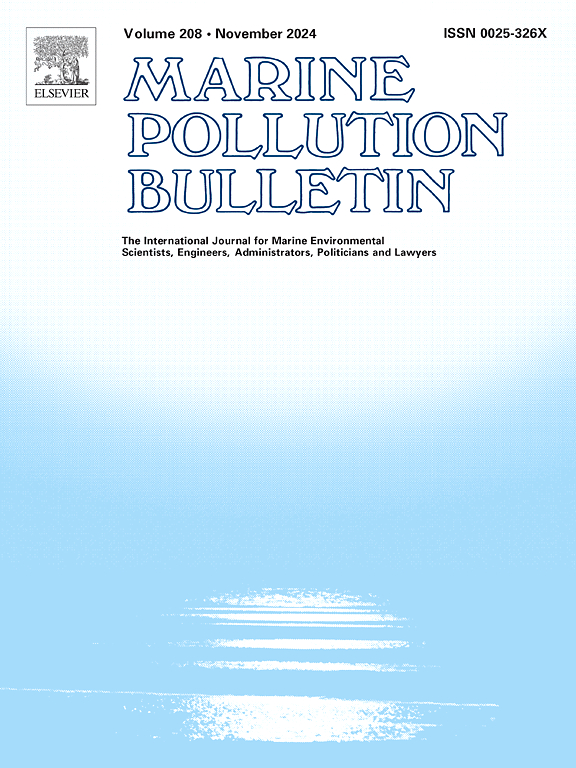用于地下油气勘探的人为电磁场(受控源电磁学,CSEM)对大西洋黑线鳕(Melanogrammus aeglefinus)早期发育的影响。
IF 5.3
3区 环境科学与生态学
Q1 ENVIRONMENTAL SCIENCES
引用次数: 0
摘要
受控源电磁学(CSEM)利用电磁场(EMF)探测油藏。大西洋黑线鳕(Melanogrammus aeglefinus)是一种具有重要商业价值的底栖鱼类,由于可能与鱼卵分布重叠,此类勘测可能会对其造成影响。在这项研究中,将黑线鳕鱼卵暴露在电磁场中,在实验室中复制 CSEM 勘测条件。使用三种不同的电磁场强度来模拟电磁场源与生物体之间的不同距离。暴露持续 15 分钟。还进行了最坏情况下的试验,即在最高电磁场水平下暴露 1 小时。所有处理均未导致畸形、死亡或影响卵的孵化。不过,暴露于电磁场会导致刚孵化的幼虫心动过速,并减少其卵黄囊储备的大小。这种影响在最低电磁场强度(相当于电磁场源与受照对象之间的距离为 1000 米)时明显,并随照射时间和强度的增加而增加。本文章由计算机程序翻译,如有差异,请以英文原文为准。
Effects of anthropogenic electromagnetic fields used for subsurface oil and gas exploration (controlled-source electromagnetics, CSEM) on the early development of Atlantic haddock (Melanogrammus aeglefinus)
Controlled source electromagnetics (CSEM) uses electromagnetic fields (EMF) to detect oil reservoirs. Atlantic haddock, Melanogrammus aeglefinus, is a commercially important demersal fish species that can potentially be impacted by such surveys due to potential overlap with egg distribution. In this study, haddock eggs were exposed to EMF, replicating CSEM survey conditions in a laboratory. Three different EMF intensities were used to replicate different distances between the EMF source and the organism. Exposures lasted for 15 min. A worst-case scenario, i.e. 1 h exposure at the highest EMF level was also carried out. None of the treatments caused malformations, mortality or affected hatching of eggs. However, EMF exposure induced tachycardia in newly hatched larvae and reduced the size of their yolk sac reserve. The effect was significant at the lowest EMF intensity (corresponding to 1000 m between the EMF source and the exposed subject) and increased with exposure time and intensity.
求助全文
通过发布文献求助,成功后即可免费获取论文全文。
去求助
来源期刊

Marine pollution bulletin
环境科学-海洋与淡水生物学
CiteScore
10.20
自引率
15.50%
发文量
1077
审稿时长
68 days
期刊介绍:
Marine Pollution Bulletin is concerned with the rational use of maritime and marine resources in estuaries, the seas and oceans, as well as with documenting marine pollution and introducing new forms of measurement and analysis. A wide range of topics are discussed as news, comment, reviews and research reports, not only on effluent disposal and pollution control, but also on the management, economic aspects and protection of the marine environment in general.
 求助内容:
求助内容: 应助结果提醒方式:
应助结果提醒方式:


